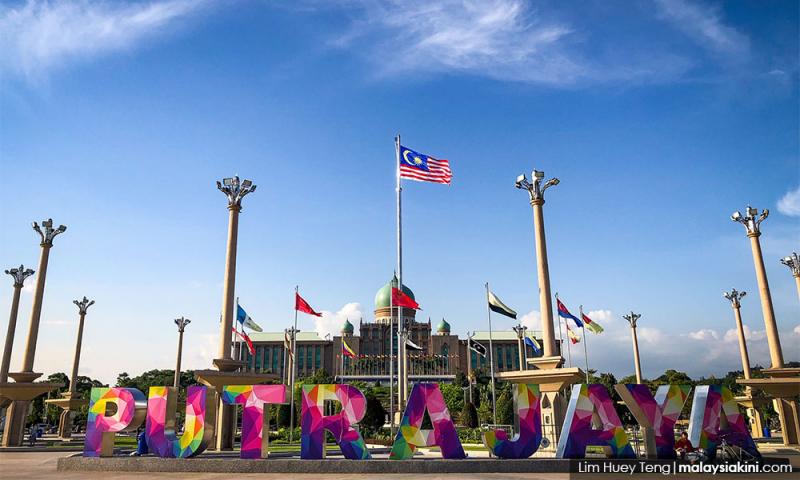Putrajaya’s monorail - public funds put to good use?
LETTER | Putrajaya Corporation president Aminuddin Hashim recently told the media that the abandoned Putrajaya monorail project will finally be continued. This is after years of speculation dating back since 2016 when MMC proposed the Putrajaya monorail to the National Economic Council. There were also reports this year that Putrajaya’s rail link might be an LRT from Kajang to the administrative capital.
This was in light with the increase in population and office towers around this city as well as the congestion during the start and end of government working hours.
While the continuation of the project has been met with a mostly positive response by Malaysians, criticism of the project has not been scarce, especially from Putrajayans. Referring to a Facebook post by Putrajaya Corporation back in 2017 on researching the initiative, most of them commented that the bus service provided in this city was lacking, and that should be improved on first.
Nadi Putra, the sole bus service operator in Putrajaya, has been giving poor service in recent times due to a lack of funds, buses breaking down and the poor attitude of bus drivers. With a one star rating on their Facebook page, they have given a bad reputation to the city’s image.
First off, as a Putrajayan, I applaud the Putrajaya Corporation's (PPj) strong initiative in reviving the monorail project with the intention of improving public transport here. It would be a waste of funds to keep on maintaining the tunnels without it having any purpose for years.
However, I was flabbergasted that PPj now has the funds to restart the monorail project, considering they did sell off 80 percent of their share in Nadi Putra to GETS Global due to a lack of funds. Continuing the monorail project is estimated to cost around RM2 billion even with the tunnels and the suspension bridge already built. The cost does not include land acquisition too.
Although it has been mentioned that the government might find a private company to share the construction cost; they will still have to pay a lot just to cover a quarter of it; which is around RM500 million.
Let’s do a bit of comparison and calculation. According to GETS Global managing director, Che Azizuddin Che Ismail, the electric buses in Putrajaya each cost RM2 million each. The buses can fit in around 60 passengers. Let’s say that the RM500 million was spent on improving bus services here. RM300 million to buy the same rolling stock would get us another 150 of them to add on to the other 150 electric buses planned to arrive in 2025.
RM200 million can be used to build better bus infrastructure including a renovation for Putrajaya Sentral, maintenance of existing bus stops, more bus lanes and a traffic signal priority system for buses. The buses could even use the monorail tunnels, considering the monorail track infrastructure has not been installed yet.
That amount of money can certainly upgrade Putrajaya’s lousy bus system. Bus lanes and a traffic signal priority will enable buses to travel at faster speeds, increasing the frequency of buses and decrease commuting times. With the flexibility of buses, it’ll have a greater impact on the city with larger coverage.
As of right now, we Putrajayans are stuck with a poor bus system. Civil servants and students continue to face long waits for buses, making them late for work or school. Long, winding routes, lack of a traffic light priority system, and traffic jams caused by cars increase commute times. This has and will continue to affect Putrajaya’s mindset to stigmatise public transport as being slow and unreliable and make them harder to move away from cars.
Yet certain quarters have pushed for the monorail system to be prioritised and continued because the city will “look much more sexier”. For those who think this way, I ask which is more important - being able to provide a hassle-free commuting experience for the people who actually live here or doing something just to impress outsiders?
Let’s remember this - Putrajaya is a city of 100,000 and is only expected to grow with 350,000 residents by 2025. No matter how much PPj fills the city with festivals and events, most of the time it will remain a quaint administrative capital with most of the population working inside government offices 9-to-5 on weekdays. It is far from becoming a bustling area like Petaling Jaya or Puchong. I don’t see the need for Putrajaya to have a monorail system when other cities that have smaller roads and are almost in gridlock daily get ignored by the federal government.
Therefore, I call Putrajaya Corporation and the federal government to assess Putrajaya’s situation to see whether we truly need a monorail system to fix the public transport woes here. We only need to improve what we have at the moment without all the sugar coating. Let’s not build a white elephant.
The views expressed here are those of the author/contributor and do not necessarily represent the views of Malaysiakini.
RM12.50 / month
- Unlimited access to award-winning journalism
- Comment and share your opinions on all our articles
- Gift interesting stories to your friends
- Tax deductable
